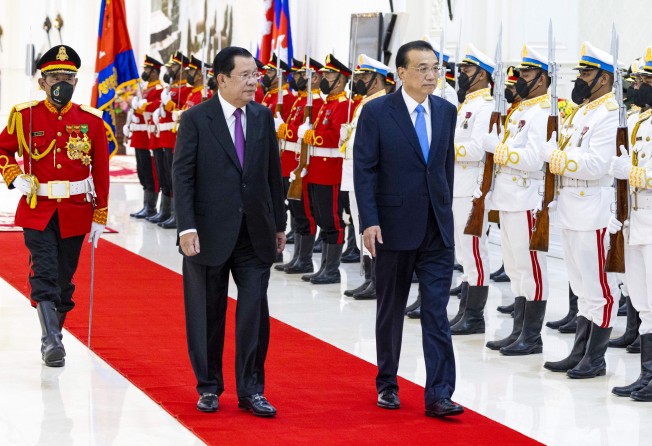
06:12
Soaring inflation, Ukraine and Myanmar top Asia summit agendas

China is expected to start talks with Southeast Asian nations about an upgrade to their giant free-trade zone in a potential boost to the stability of Beijing’s manufacturing supply chains amid mounting rivalry with the United States.
Officials in Beijing have told state-run media they will approach leaders in the Association of Southeast Asian Nations (Asean) bloc this week about accelerating negotiations for what they call the Asean-China Free Trade Area “Version 3.0”. Chinese Premier Li Keqiang is in Phnom Penh this week to meet with the bloc’s 10 members during a series of summits.
In September, the foreign ministry said establishment of Version 3.0 “is about to start”. China is looking to expand the trade zone to keep supply chains and markets open in a part of the world it considers crucial.
“Everything is becoming more strategic these days, and every trade announcement is becoming more tied to geopolitics than ever before rather than to direct flows,” said Jayant Menon, a visiting senior fellow with the ISEAS-Yusof Ishak Institute’s Regional Economic Studies Programme in Singapore.
Singapore, Brunei, Cambodia, Indonesia, Laos, Malaysia, Myanmar, the Philippines, Thailand and Vietnam comprise Asean, which has a combined population of 685 million and is a growing centre for manufactured goods that are sometimes sent to China for final assembly and re-export. China-Asean trade is valued at US$878.2 billion, the ministry said in September.
China is looking to upgrade its Asean trade ties as the US government squeezes it economically through tariffs and curbs on its hi-tech sector, while bypassing Chinese involvement in its own trade deals.
Washington set up a 14-nation Indo-Pacific Economic Framework (IPEF) in May to advance “fair” trade, supply chain “resilience” and improvements to infrastructure including clean energy. China is not a member.
“To outmanoeuvre is one thing, and to forestall is another,” said Thitinan Pongsudhirak, a political-science professor at Chulalongkorn University in Bangkok. “It is to prevent IPEF from outflanking China’s economic industries.”
Western sanctions against Russia over the war in Ukraine have further rattled global supply chains.
“After Ukraine and after the trade war with the United States, China has to think very hard about how to overcome the decoupling,” said Alexander Vuving, a professor at the Daniel K. Inouye Asia-Pacific Centre for Security Studies in Hawaii.
The 12-year-old Asean-China free trade area cuts tariffs on 90 per cent of goods shipped.
At the Asean-China Summit in October last year, the two sides released a statement saying they had agreed to a joint feasibility study on making the trade area more “comprehensive” and “responsive to contemporary global challenges”. It was most recently upgraded in 2019.
Future changes should address rules of origin and enhance “digital platforms” for tourism, last year’s Asean-China statement said.
A September trade exposition in the Chinese city Nanning was “themed around” upgrading the trade area, the government-run China Daily reported.
Southeast Asian nations will welcome an upgrade, Vuving said, as they depend on selling manufactured goods to China and many look to the world’s No 2 economy as a source of development.
Trade between China and several Southeast Asian nations grew by double-digit percentages in the first nine months of the year, Chinese customs data show. Exports to Singapore rose 41 per cent, for example, and 30 per cent to Malaysia.
A one-year-old China-funded railway line through Laos has taken US$1.7 billion worth of cargo through the impoverished country, state-run Xinhua News Agency reported on Wednesday.
“This is one of these FTAs that really does bite, so to speak,” Menon said.
An upgrade “will have real effects” and “from the Chinese side, it’s about saying ‘remember we are still here and we are actively engaged with you’,” he said.